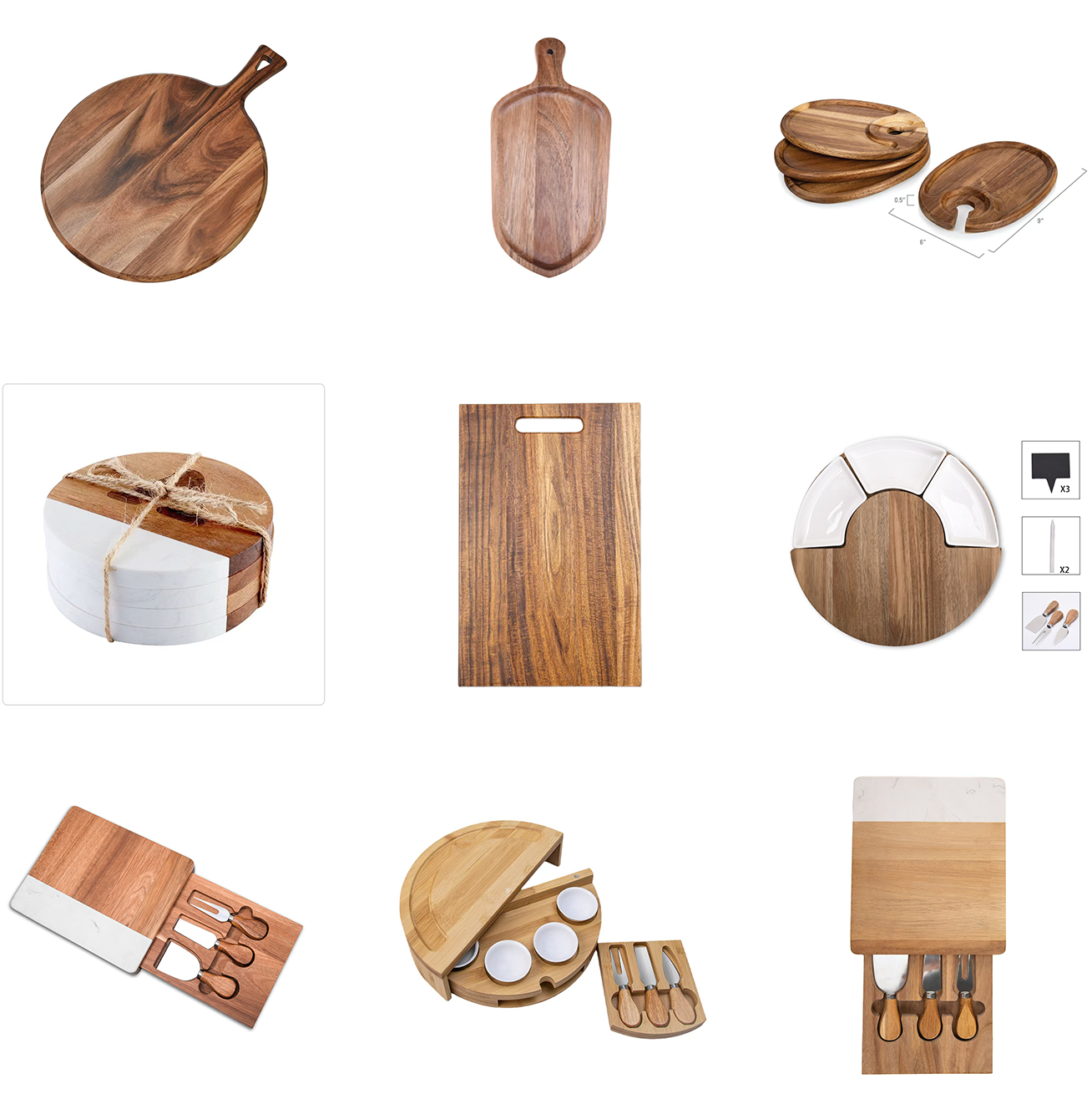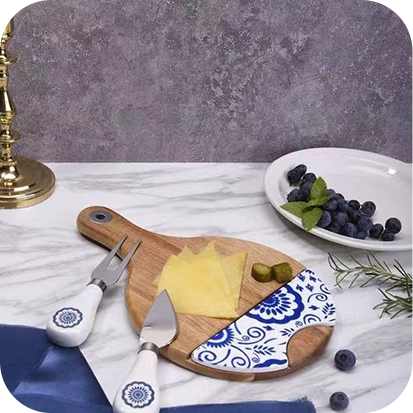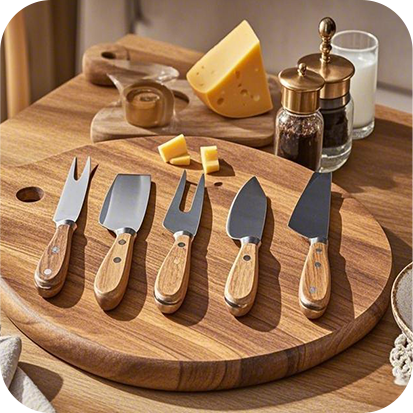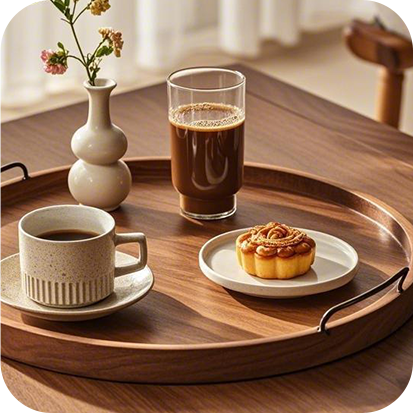Explore the value of acacia cutting boards, comparing kitchen-grade trays and printed bread boards with pros, cons, and care tips.
.jpg)
Is an Acacia Wood Cutting Board Worth It? Benefits and Drawbacks to Consider
When selecting a wood cutting board, options like maple and walnut often dominate—but acacia wood is quickly gaining attention for its resilience and visual appeal. If you’re considering a Kitchen-grade custom Acacia wood Acacia serving tray or a Health-safe custom print Acacia wood Bread cutting board, it’s important to weigh the pros and cons before making your investment.
✅ Advantages of Acacia Cutting Boards
Naturally Beautiful and Functional: Acacia’s rich, warm hues make each piece unique and suitable for both prep and serving.
Food-Safe for Sensitive Use Cases: Non-toxic finishes on certified boards make them ideal for bread, sandwiches, and raw foods.
Resistant to Warping and Damage: Acacia holds up well to moisture and moderate knife use.
Sustainable Material: Acacia grows quickly and is harvested responsibly.
❌ Disadvantages of Acacia Cutting Boards
Requires Regular Maintenance: Monthly oiling is necessary to prevent cracking and maintain water resistance.
Not Ideal for High-Impact Butchering: Acacia lacks the density of end-grain maple or walnut.
Sensitive to High Temperatures: Dishwashers and steam can degrade the finish.
Quality May Vary by Manufacturer: Some lower-end products may use glued composites or lack proper sealing.
SEO Tags: acacia board pros review, safe bread cutting board, kitchen-grade wood tray, long-lasting snack board, sealing wood boards, eco kitchen materials, food contact safe tray, prep-safe acacia surface, customized serving tools, acacia vs maple comparison







.jpg)












